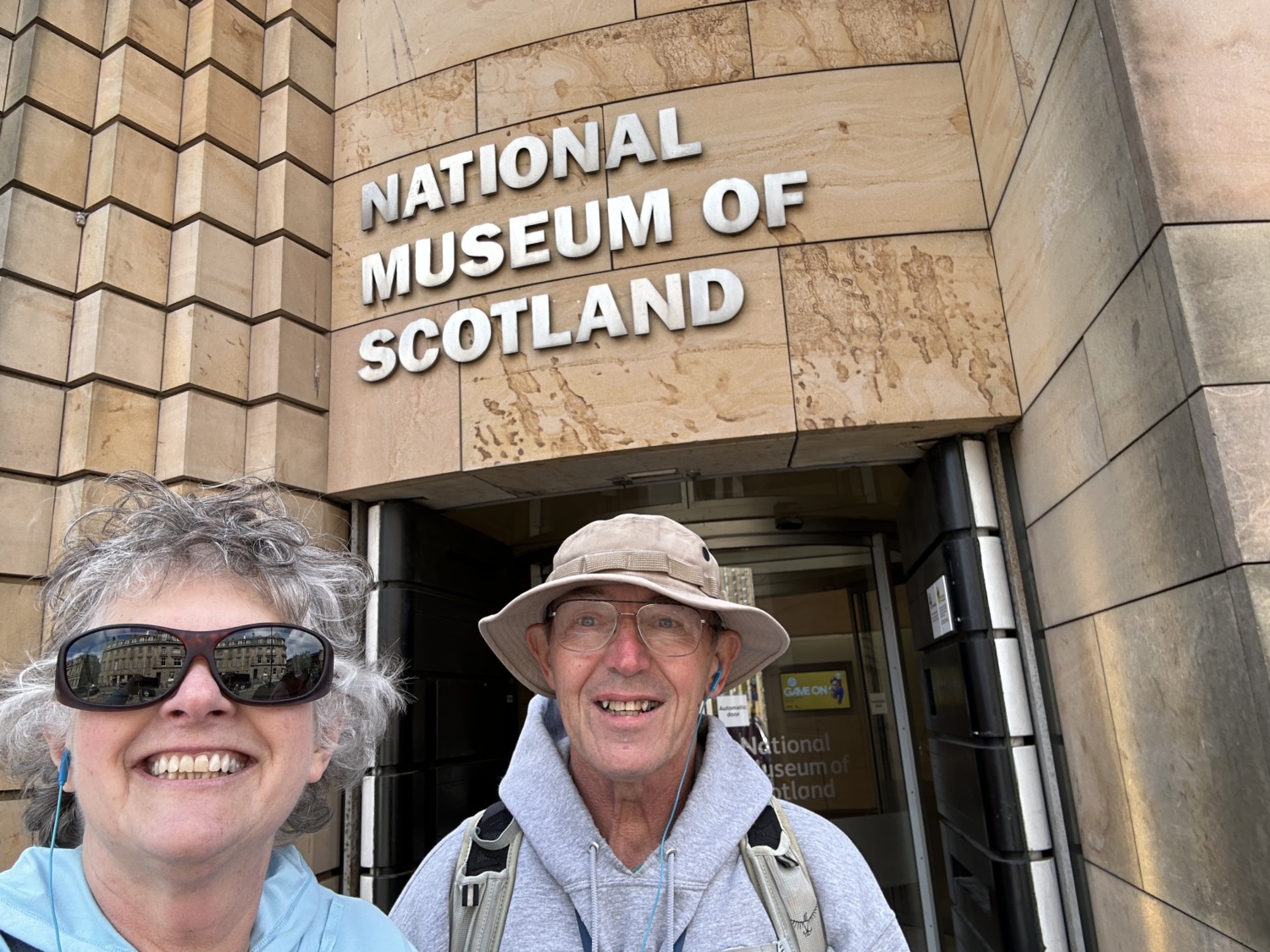I was very excited to get to Edinburgh, Scotland. The history. The old buildings. The Edinburgh Castle, Holyroodhouse, the Royal Mile. Who wouldn’t want to go to Edinburgh?
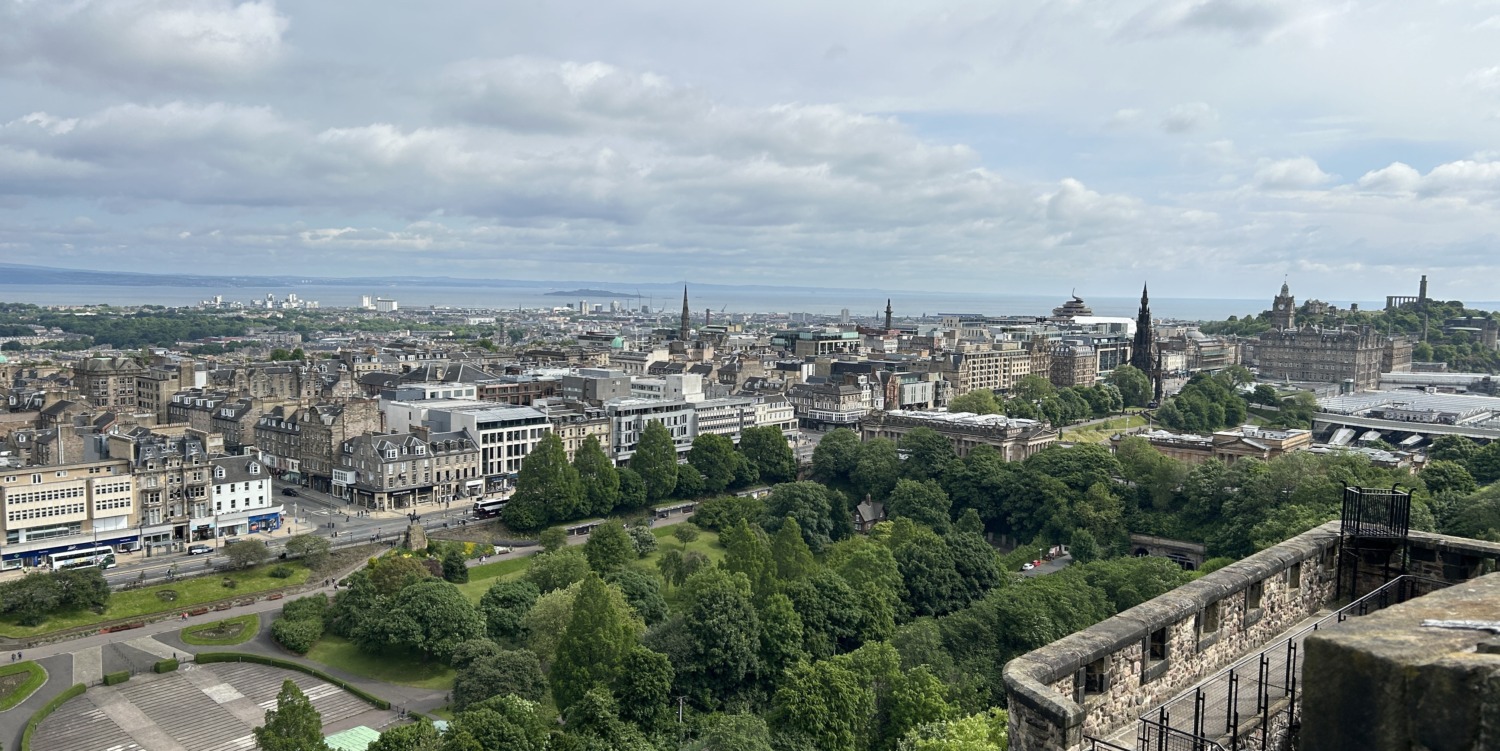
We arrived in Edinburgh late in the afternoon after our travel day. Tom and I skipped the Caelidh and dinner that was an extra on the tour. After two nights of high sodium dinners, we just wanted some salad. There was a Tesco within a block of the hotel. We walked there, got some salad, chicken strips, and rolls, walked back and watched a little telly while we ate. We watched a British Version of “Catchphrase” where we didn’t know most of the phrases. But it was fun to try and guess anyway.
After supper we headed out to the city. We wanted to get oriented, and a walk down the Royal Mile seemed just the ticket. Instead of all the interesting shops we were hoping to see, it was one tourist shop after another. I wasn’t surprised, but 90% of the shops were selling exactly the same things. We walked up to St. Giles Cathedral and then headed back to our hotel.
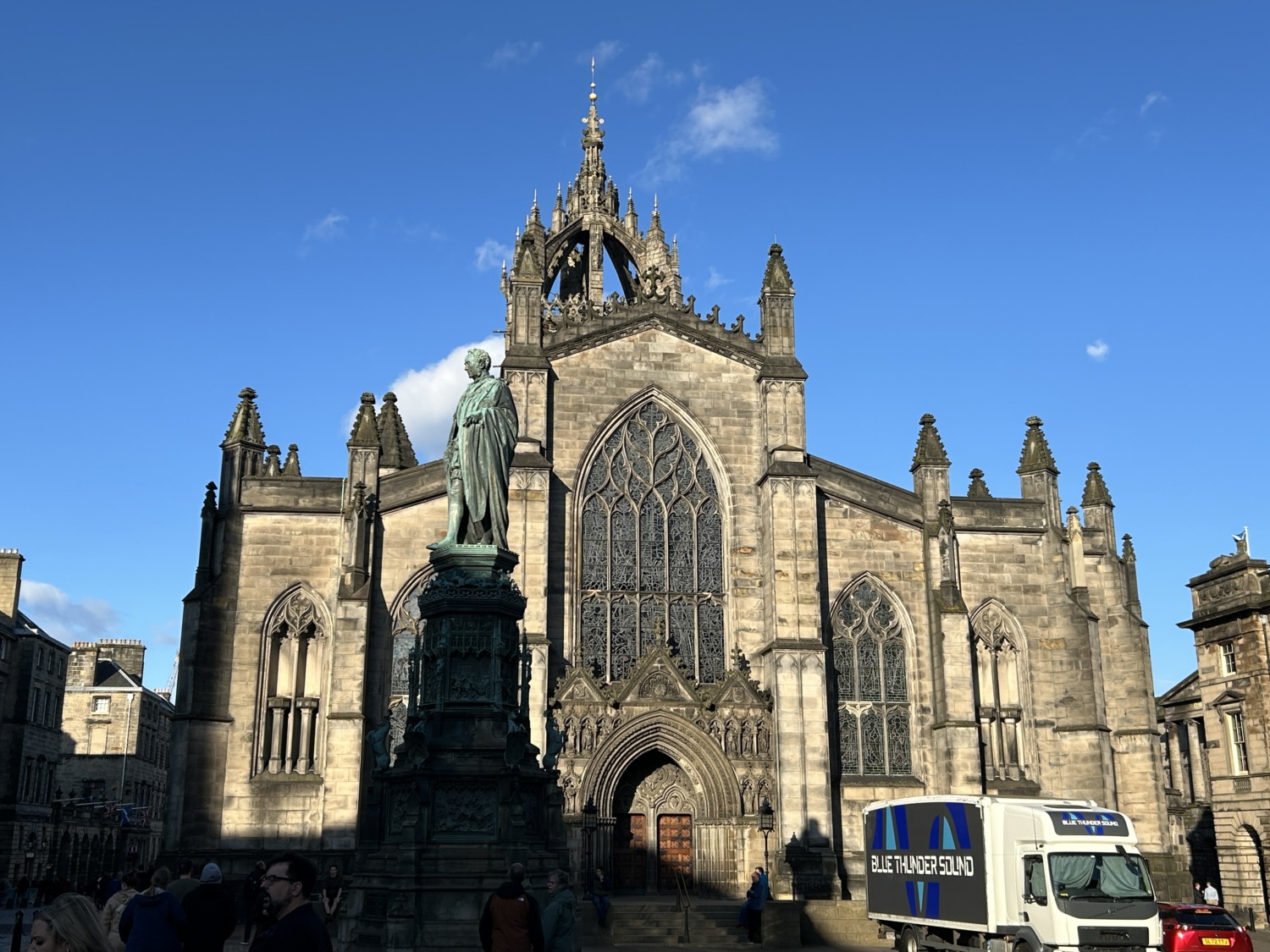
The next morning we started really exploring Edinburgh. On a short bus tour we learned a lot of the history of the city. Recognized as the capital of Scotland since the 15th century, Edinburgh is the seat of the Scottish Government, the Scottish Parliament, the highest courts in Scotland, and the Palace of Holyroodhouse, the official residence of the British monarch in Scotland. It is also the annual venue of the General Assembly of the Church of Scotland. The city is a center of education, particularly in the fields of medicine, Scottish law, and literature.
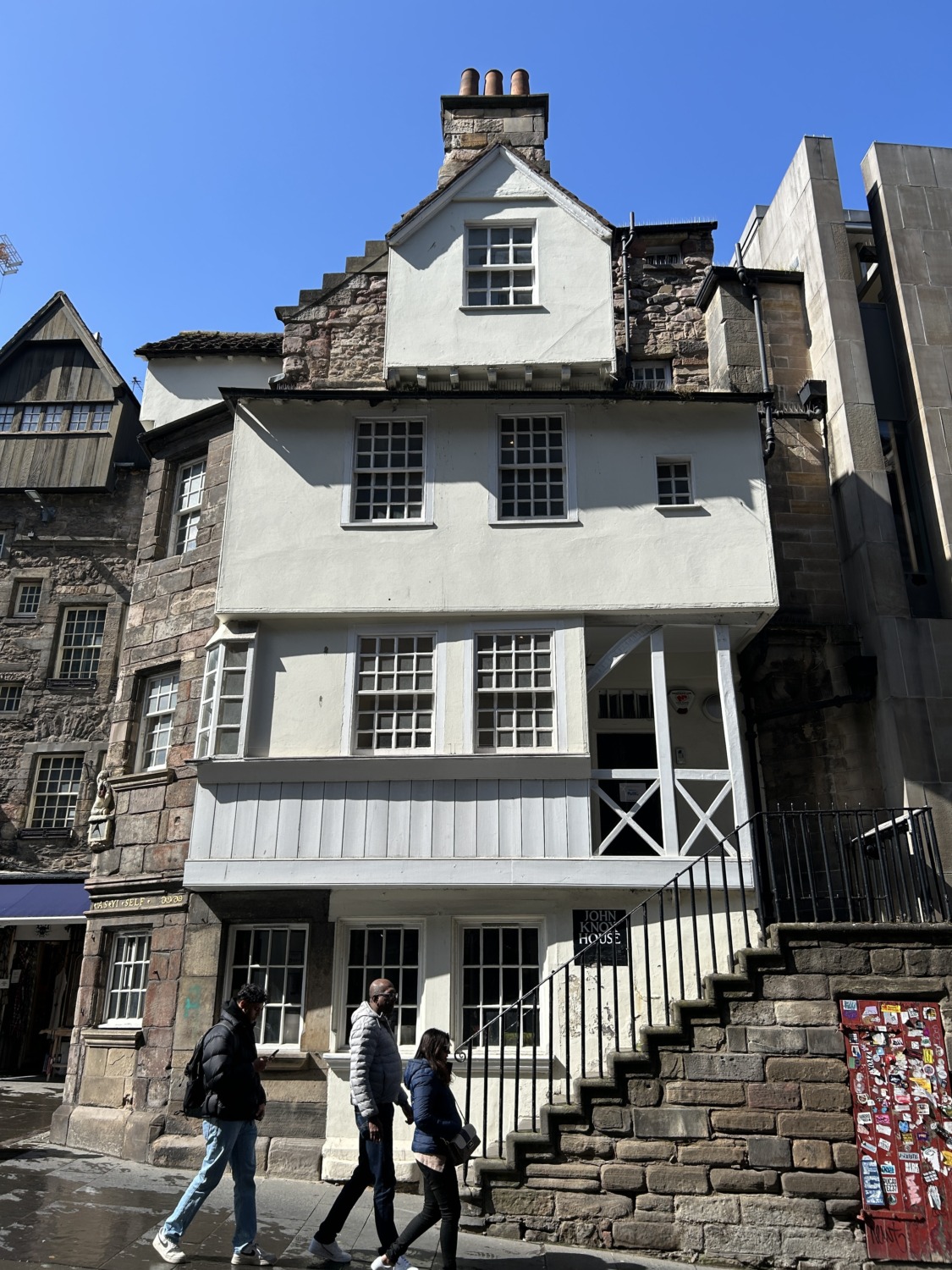
There are statues and plaques for famous people everywhere. We saw the house where Robert Louis Stevenson grew up. Then the statue to Robert Burns, the greatest Scottish poet. We saw John Knox’s house and heard how he converted the country to Protestantism. We had never heard of many of the people represented by the statues, mostly because they were politicians. There were plenty of mentions of William Wallace and Robert the Bruce.
I learned a new phrase while we were on the tour. We passed the Hall of Records, and all the Aussies on the tour called out “Hatches, Matches, and Dispatches.” The Hall of Records is where births, marriages, and deaths are recorded. Hatches, matches, and dispatches. Clever.

Our tour continued off the bus at Edinburgh Castle. Our tour guide kept telling us how few people were at the castle the day we were there, but it looked liked thousands to me. We were able to walk right in and there wasn’t a line, so he was probably right. There was a special ceremony going on, in preparation for the 80th anniversary of D-Day, so many of the buildings were closed to us. But we got a good sense of the place and got to see the Crown Jewels.

Edinburgh Castle stands on Castle Rock, which has been occupied by humans since at least the Iron Age. There has been a royal castle on the rock since the reign of Malcolm III in the 11th century, and the castle continued to be a royal residence until 1633. From the 15th century, the castle’s residential role declined, and by the 17th century it was principally used as a military garrison. Various restoration programs have been carried out, especially in the last 150 years.

When Tom and I were done exploring the castle grounds, we headed to the Tartan Weaving Mill, just outside the castle gate. The Tartan Weaving Mill advertises that it is “Edinburgh’s only fully working commercial weaving mill. Visitors can view the weavers at work through numerous viewing points in the mill factory shop.” It also claims that it has the largest selection of clan tartans in Scotland. The second part was true. The first part, unfortunately, was not. The first floor weaving area was closed indefinitely because they can’t find enough weavers to hire. Rats.
I was disappointed, but the Tartan Weaving Mill still had plenty of wool. They specialize in tartans woven in Scotland. My mother’s father was Arthur Irvin. He descended from the Scottish Clan Irvine. I spent quite a bit of time looking at the Irvine tartans and Irvine specific souvenirs. Tom has a lot more Scottish ancestry than I do, but his clans were harder to find. He looked for Hume, Johnstone, Ross, and Murchison. Tom found some Ross and Johnstone stuff but no luck on Hume or Murchison. He also found some Hartley stuff, but they were English, not Scottish. It was a great place to pick up a few souvenirs.
After the Edinburgh Castle and the Tartan Weaving Mill, we followed our guide on a walking tour of Edinburgh. We walked into some of the closes. A close is a small alley that leads to a courtyard surrounded by houses and businesses. We saw Butchers’ Close, Chandlers’ Close, and Stoddark’s Close. It is called a close because there are gates on the end that can be closed.
Our guide took through one close to the Poets’ Museum. The courtyard there was called Lady Primrose Stair’s Court. Our guide told us the story of Lady Primrose, which you can read here.
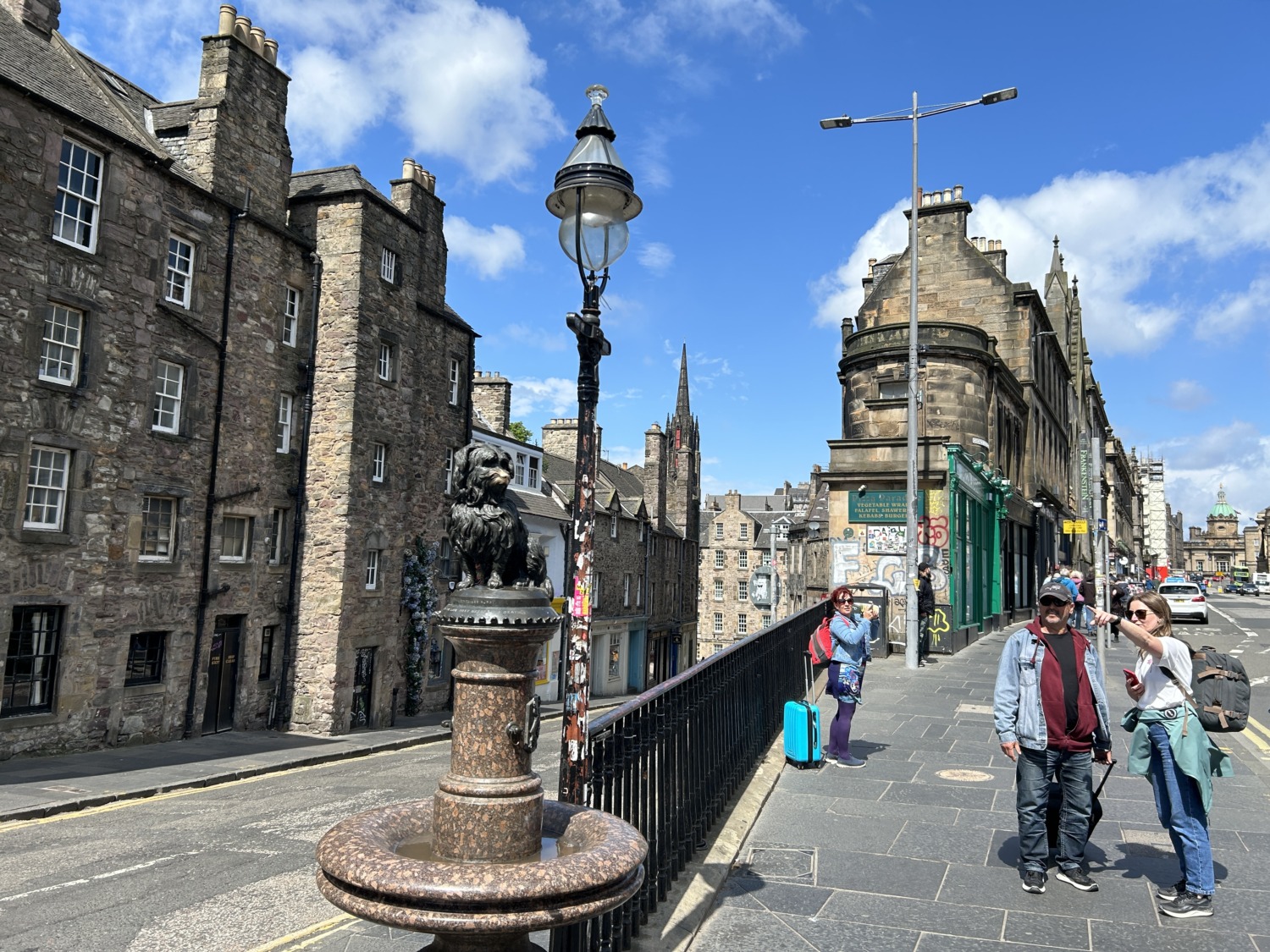
As we continued our walking tour, we ran into lots of other tour groups. Harry Potter tours are very popular right now. J.K. Rowling lives in Edinburgh and took inspiration for her book from many places in the city. We saw the Greyfriars Bobby statue and his burial site. Toward the end of our walking tour it started raining heavily. We skipped the last stop and headed for a pub where we could have a hot drink and get dried off.
When the rain stopped, Tom and I went in search of a light lunch. We found a little cafe, “The Global Kitchen” and had a delicious lunch. Then we headed to the National Museum of Scotland. We had done so much research previously on Scotland that there wasn’t a lot of new information. The museum is great and very extensive. One side takes you through the centuries of Scottish history and the other side deals with specific inventions or people. After a couple of hours, Tom and I realized we were “museumed out.” Everything looked the same as we had seen in other places.
We enjoyed some of the special exhibits in the great hall. Dolly the sheep, the first cloned mammal, is stuffed and lives on in a special case. There was a large statue of James Watt who invented the steam condenser which made steam power possible. He was also the first person to use a fly ball governor on a steam engine. Tom stood next to his statue and pointed out where some of Watt’s calculations were wrong.
On our way back to the hotel, we looked for a sweatshirt for Tom. He has very specific requirements and we couldn’t find the one he wanted among the sameness of the souvenir shops. It was another dinner from Tesco, which was perfect. Low sodium and low calorie, unlike most of the provided meals on our tour.
We enjoyed Edinburgh very much, but it is like many big cities. Lots of people and lots of tourists trying to see and do the same things. I have a feeling that living in the city would be a fine experience. You would learn how to avoid the tourists and get to enjoy the culture and history of the city at a more leisurely pace.



